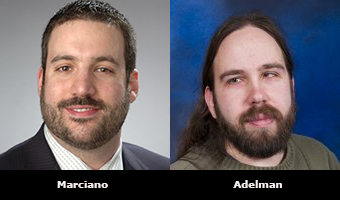6 A&S Physicists Awarded Breakthrough Prize
Our universe is dominated by matter and contains hardly any antimatter, a notion which still perplexes top scientists researching at CERN’s Large Hadron Collider. The Big Bang created equal amounts of matter and antimatter, but now nearly everything—solid, liquid, gas or plasma—is…


 Marciano and Jonathan Adelman, FNSSI research assistant professor, have developed a new method to predict the number of people contributing to mixed DNA samples, the results of which are
Marciano and Jonathan Adelman, FNSSI research assistant professor, have developed a new method to predict the number of people contributing to mixed DNA samples, the results of which are